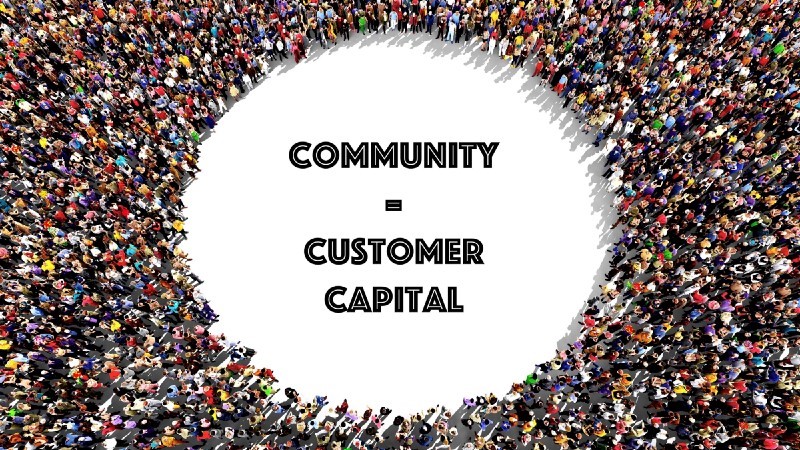The word itself is derived from an old Latin word, caput which means “Head”. CAPUT gave birth to the Old French word, capitalis an adjective meaning “of or relating to the head.” Eventually, the word capital emerged in Middle English meaning ‘relating to the head or top’, ‘standing at the head or beginning’. It is therefore of little wonder that, regardless of the specific instance of its use, the word CAPITAL still stands for something very important.
As the location of the seat of government or administrative centre of a country or region, every Capital City (Town) is of such great prominence. Thus places like Washington, Rabat, Abuja, Pretoria, to mention a few, are of great importance in their various countries. As the host of a country’s most significant centre of commercial activity, the Commercial Capital is also of utmost importance to the economy of any country. New York, Casablanca, Lagos, Johannesburg, etc. are very critical to the success of their countries.
In architecture, the word is used to describe that broader section at the head of a pillar or column. Typically designed to stand out from the rest of the pillar, the capital is of such importance that its design is a clue as to what style of architecture the building or edifice belonged to. The designs of a capital tell if the building is of Roman, Egyptian, Islamic, Persian or Gothic origins.

There are many other instances where the power of the word “Capital” shines through. To write in capital letters is to use the UPPER CASE of the letter. Capital letters are used to start sentences and are often used in headings. More importantly, proper nouns such as names of specific people, places, things are started with a capital letter to distinguish them from ordinary nouns.
In the world of business and commerce, capital stands for the total of all financial resources available to a business and includes terms such as working capital, equity capital, and debt capital. Capital includes funds held in deposit accounts, tangible machinery like production equipment, machinery, storage buildings, and more.
All in all, the word capital can simply be defined as “any valuable resource of any kind.” This is the definition that best appeals to me because it embodies most, if not all, of the other definitions of the word. It is important to note that valuable resources can either be tangible or intangible. Therefore, when we talk of capital, especially in business, we also include all the knowledge resources possessed by organisation.
This is what is referred to as Intellectual Capital.
There are many definitions of the term including “the wealth of the ideas in an organisation”, “the skills/competences, training and education, and experience and value characteristics of an organisation’s workforce” and “the intangible value of a company, its staff and their total knowledge.” Other terms used for Intellectual Capital include Intangible Assets, Knowledge Assets/Capital or Intellectual Assets.
It is generally accepted that three elements make up Intellectual Capital. The first is what is referred to as Human Capital. This refers to all the knowledge, skills, competences, experience, know-how, capabilities, expertise existing within the employees of the organisation.
The second component of Intellectual Capital is Structural Capital. This is what is defined as “that which is left after employees go home for the night”. These include the processes, information systems, databases, policies, intellectual property, culture, etc. of the organisation.
For a student of customer service and service excellence, the last type of Intellectual Capital particularly resonates with me. This refers to all the relationships an organisation has with all external stakeholders. These include relations with suppliers, partners, debtors, creditors as well as with customers. Other names used to refer to this component of Intellectual Capital include Relational Capital, Relationship Capital and External Capital. Due to the importance of customers to the fortunes of every business, this type of Intellectual Capital is also referred to as Customer Capital.
It is a generally accepted fact that in the knowledge economy we find ourselves in, the relationship an organisation has with its customers can be a very source of competitive advantage. Firms with strong ties to their customers will always beat those whose relations with their customer are, at best, fleeting. It is therefore important for every business to put in place systems, structures and strategies to ensure that it builds long-term relationships with its customers.
It can be argued that the first two components of Intellectual Capital, i.e. Human and Structural Capital are only as useful as they help in building up the organisation’s Customer Capital. It does not matter how well employees know and how well the organisation is organised internally; if these do not translate into expanding and strengthening the relationships the organisation has with its customers, nothing will be gained.
Customer Capital is an interesting concept because for many businesses the call for offering great customer service seems like a call to do something that is just nice. Many customer-facing employees are of the opinion that customer service is just a nice thing to do. Many frontline staff see customer service as a nice-to-do and not a must-do. They believe the business exists simply to sell whatever products or services it puts out there. The way the business does this is not so important as long as it gets its offering into the hands of its customers. Customer service is good but not really necessary. For many businesses, customer service is just an after-thought.
It is this customer-service-is-only-a-nice-thing-to-do mind-set that makes capacity building and training and development of frontline employees so low on the agenda of many organisations. Whenever circumstances necessitate the paring of budgets, training for those who deal with customers is always one of the first items to be cut. What these organisations fail to realise is that the relationship with the customer is a capital item and as with all capital items, investments must be made into it for its value to appreciate. Most capital items left on their own, without proper maintenance, turns to ruins, including customer capital.
Businesses that appreciate the importance of customer capital will always ensure that they have budgets for building up customer relations. These are the businesses that go ahead to implement effective Customer Relationship Management (CRM) systems that keep them informed of the responses and behavioural patterns of their customers. These businesses go beyond merely installing these CRM systems and going back to a business-as-usual attitude. They do much more—distilling whatever information is generated by the CRM systems and converting that information into useful knowledge. That knowledge is then used in driving the actions of the organisation.
When it comes to building customer capital, businesses must critically look at what unique contributions each customer can bring and then segment customers along these unique characteristics. For instance, there are going to be customers whose contribution would lead to the improvement of the services or products being offered by the organisation. These are the customers who will complain when things do not go well. They will advise the company on how to make things better.
There are also those customers whose value is in their relationship with other customers—current and potential—and through referrals can enhance the value of the organisation. With one phone call or a text message, one customer can open an avenue for the organisation into a new business opportunity that will turn around the fortunes of the organisation.
As a matter of fact, there are customers whose mere presence among the list of customers of the organisation can attract other customers to the business. Examples abound of businesses who are ready to give some customers free passes on many entry requirements just to get them on their lists of customers simply because of their attraction power. There are hotels, restaurants, nightclubs, etc. who will host particular celebrities simply because they know their venues would be full with other patrons during the period they host those stars.
Customer capital has also been shown to be a good indication of the future prospects of the organisation. Future income or cash flow from current and potential customers adds up the customer capital of the organisation. This is closely related to the concept of the Customer Lifetime Value.
I have stated before on this page that the concept of the CLV-Customer Lifetime Value is, to me, one of the strongest reasons why businesses need to invest in improving service quality which, in turn, affects the customer capital.
Defined as “a prediction of the net profit attributed to the entire future relationship with a customer”, the CLV attempts to put figures to the many reasons why customers should be treated well.
A simple formula for the CLV is given as below:
CLV = (Average Value of a Sale) x (Number of Annual Transactions) x (Average Retention Time for a Typical Client)
Among the many benefits of knowing the CLV of one’s customers is that it allows the business to take a long-term view of itself. The CLV also ensures that the business puts a premium on retaining its customers. This, as we have seen from the discussion, will translate into increased customer capital.
It is important to note that customer capital is only gained when businesses interact with customers. Therefore, businesses must concentrate on ensuring that those interactions are always the very best they can ever be. This is why every Moment of Truth (MoT) is very important to the customer capital of the organisation. Positive MoTs add to the customer capital while negative MoTs withdraw from the customer capital.
This is what calls for the training of customer-facing employees to the best of standards. On far too many occasions, I have come across customer service employees who fail to appreciate the gravity of each and every single MoT. They fail to see that it is their job to help increase the customer capital of their employer.
Many predictions have been made regarding the direction of business post-COVID-19. There are those who say that the world would change on a scale never seen before. Customer relations are going to be drastically affected, so experts claim. However, regardless of what the aftermath of this pandemic will be, one thing is undisputed—the importance of customers to the success of a business. Customer capital will remain of great importance for as long as businesses exist. Smart businesses are those that recognise this fact. They then do everything possible to capitalise on customer capital to remain at caput of the race.










